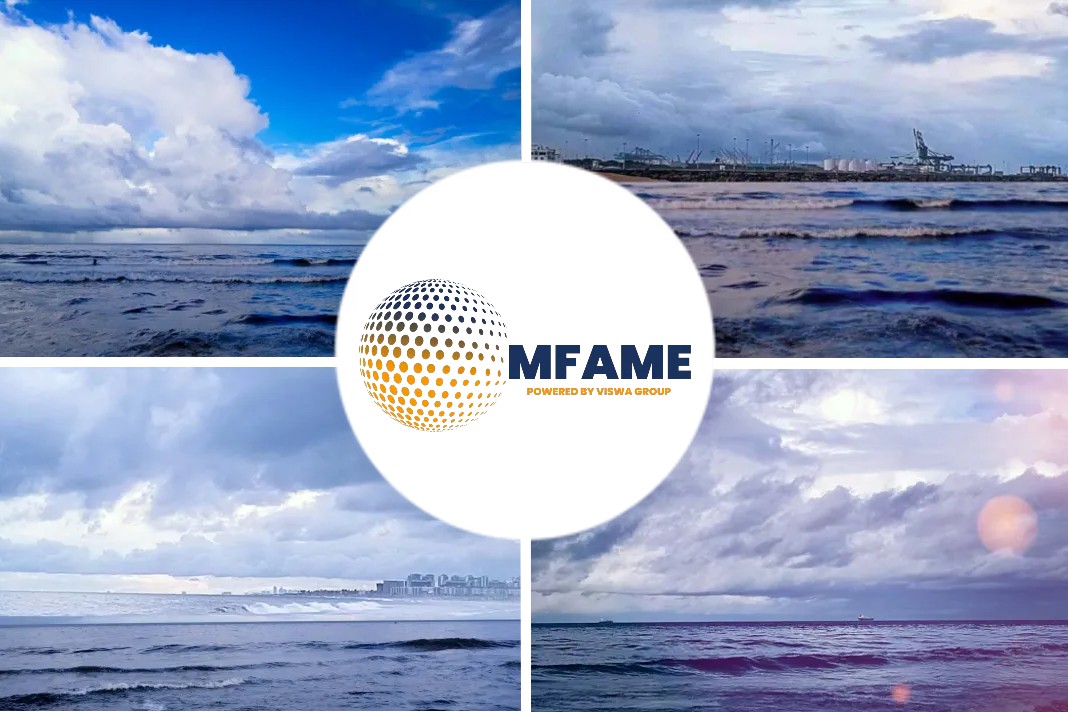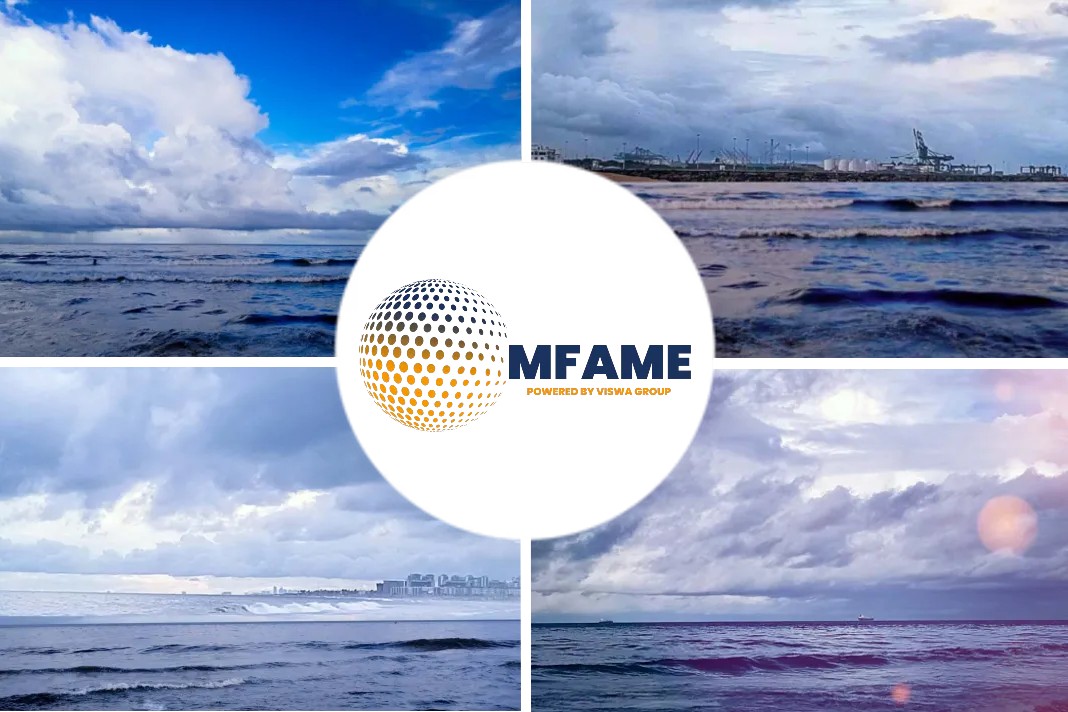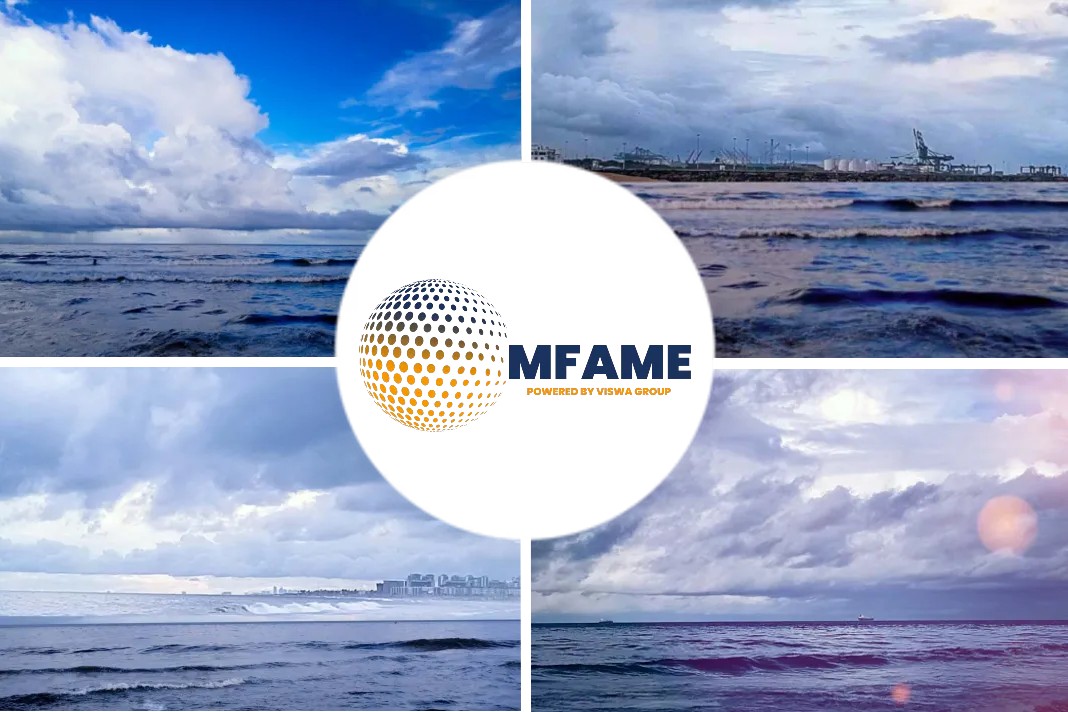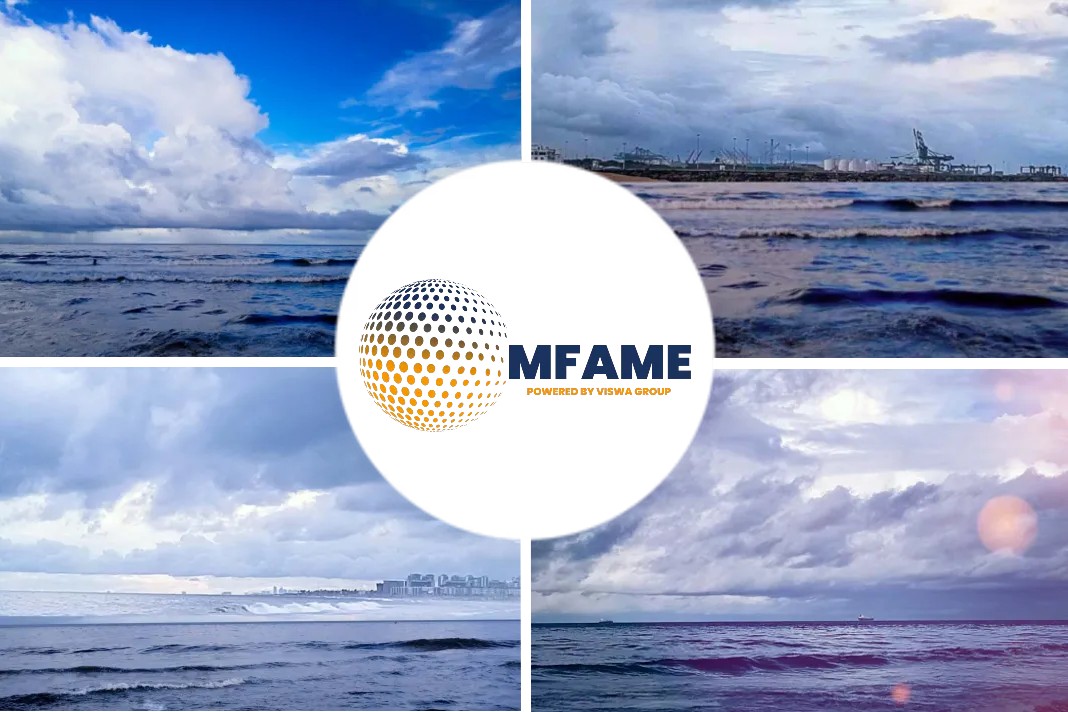In a major development, the Danish shipping giant A.P. Moeller-Maersk AS swung to a first-quarter loss and warned that rising trade tensions between the U.S. and China could cut container growth by up to a third this year, writes Costas Paris in an article published in the Wall Street Journal.
Another report published by the Maritime Executive highlights how A.P. Moller – Maersk has closed the first quarter of 2019 with a 33 percent increase in earnings before interest, tax, depreciation and amortization (EBITDA) to $1.2 billion.
However, the group released its financial results noting an impact as a result of the trade war between China and the U.S.
Backdrop of this
Maersk’s warning adds to an increasingly bleak outlook for the container shipping industry, which now expects the tariff-filled trans-Pacific dispute to be a significant drag on earnings. Demand for shipping consumer goods, manufacturing parts and other anchors of global trade is waning at the start of the season when retailers typically stock up for the year-end holidays.
New Tariff Fall Out Likely?
“New tariffs can potentially reduce expected growth in global container volumes by up to 1 percentage point,” from Maersk’s current projection of 3% growth, Maersk Chief Executive Soren Skou said in an investor conference call Friday. Chief Financial Officer Carolina Dybeck-Happe said on the earnings call, “We still see uncertainties related to the market outlook, mainly related to…the weak global economic growth, in addition to risk from a further escalation of trade tensions between the U.S. and China.”
Mr. Skou said he expects the concerns over trade tensions to shift to U.S.-Europe relations once a resolution with China is reached.
Keeping The Chin Up
“We are still facing considerable uncertainties from weaker macro numbers as well as the risk from trade tensions and implementation of IMO 2020,” said Søren Skou, CEO of A.P. Moller – Maersk. “In Q1, volumes on trans-Pacific trade between Asia and North America have shown signs of decline, and new tariffs can potentially reduce expected growth in global container volumes by up to one percentage point.”
However, Skou remains positive about the company’s strategy to transition out of the energy business. Group revenue grew by 2.5 percent to $9.5 billion in the first quarter of 2019 compared to that of 2018. “With a strong free cash flow of $3.5 billion after the sale of the remaining shares in Total SA., we have significantly strengthened our balance sheet,” he said.
How Maersk is faring?
- Maersk shares tumbled more than 4.5% on Friday before recovering to change hands around 2% lower at 7,228 Danish kroner apiece ($1,084) in afternoon trade in Copenhagen.
- Maersk, a trade bellwether controlling nearly 20% of container-shipping capacity, reported a net loss of $659 million, compared with a $2.73 billion profit a year earlier.
- The loss included $552 million booked for discontinued operations. The company’s earnings a year ago were boosted by the sale of its oil business.
- Ebitda at the Maersk Line container shipping unit jumped 42% to $927 million thanks to a sharp improvement in operating margin to 13.4%.
New Dividend Policy?
The company said it is launching a new dividend policy, aiming to pay out between 30% and 50% of its underlying earnings, which will be implemented starting this year. Maersk also said it intends to buy back shares worth up to 10 billion Danish kroner ($1.49 billion).
Maersk Purchase and Logistics Status
Total purchased Maersk Oil in 2017, and Maersk Drilling became a stand-alone company in 2018. It was announced last month that Claus V. Hemmingsen will step down as Vice CEO of A.P. Moller – Maersk and CEO of the Energy division having successfully concluded the separation of Maersk Tankers, Maersk Oil and Maersk Drilling. The Energy division will close down at the latest by the end of June 2019.
Moller-Maersk’s overall transport and logistics business has grown significantly over the last few years – both organically and inorganically through the acquisition of Hamburg Süd.
Profitability in Ocean increased. EBITDA grew 42 percent to $927 million compared to same period last year, mainly driven by a 3.9 percent increase in average loaded freight rates and an improvement in total operating cost of 2.8 percent. Revenue increased to $6.9 billion despite lower volumes which declined 2.2 percent, impacted by the front-loading seen on the Pacific trades in Q4 2018 and weak demand on Latin America and Oceania trades.
The opening of the Moin terminal, Costa Rica, and positive underlying volume growth in gateway terminals had a positive impact on terminal profitability in the quarter. However, Logistics & Services reported a decrease in revenue driven by lower air freight forwarding revenue.
Maersk Prospects
“We made good progress on the transformation, where we have completed the separation of the energy businesses, further integrated our organization and continued to improve our product portfolio. This resulted in a solid cash return on invested capital and delivery of synergies, getting us closer to our target of $1 billion by end of 2019,” says Skou.
Although Maersk Oil has been sold, the Board of Directors has decided not to pursue a separation solution for Maersk Supply Service.
Subject to the current risk of further restrictions on global trade and other external factors impacting freight rates, bunker prices and foreign exchange rates, A.P. Moller – Maersk reiterated its guidance of an EBITDA of around $5 billion.
The US-China Trade Standoff Impact
The trade standoff between U.S. and China looks set to curtail growth in trans-Pacific seaborne transport this year if no settlement is reached. Higher tariffs the U.S. imposed last year triggered an increase in volumes as companies pulled forward purchases and shipments to get ahead of potential new levies. The higher levies the Trump administration has moved to impose this summer include tariffs on more consumer products that are the backbone of container shipping, including finished electronics, furniture and other retail goods.
Shipping industry measures show freight rates, which peaked at the end of last year driven by cargo owners front-loading cargo to avoid tariffs, have been slipping this spring amid declining volumes.
Tariff, The Biggest Risk
“The tariffs are the biggest negative risk that can seriously hit volumes and earnings,” said Jonathan Roach, a container shipping analyst at London-based Braemar ACM. “The optimism we had just a few weeks ago when we thought a trade deal would be signed has evaporated. There is a lot of uncertainty out there.”
- Maritime data provider Alphaliner this week cut its container volume growth estimate for this year to 2.5% from 3.6%.
- Chinese shipping executives say they have withdrawn box capacity in the trans-Pacific route since the first round of tariffs were introduced last summer.
- Cosco Shipping, the world’s third-biggest box-ship operator, has removed 10% of its carrying capacity on the route since the end of last.
- U.S. container imports into the West Coast fell 0.5% in the first quarter from a year ago, according to Bimco, a shipping industry group, and exports from those ports most exposed to trans-Pacific trade fell 18% in the same period.
Did you subscribe to our daily newsletter?
It’s Free! Click here to Subscribe!
Source: Wall Street Journal, Maritime Executive















